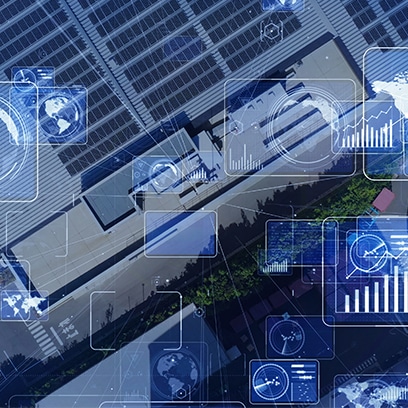
How is data analytics used in aerospace?
The aerospace industry has been the earliest adopter and most intensive user of resources of data analysis. Though confronted with problems common to all companies, because of the vast spectrum of its activities, there are multiplied considerably. Only through the application of Big Data can the aerospace industry sustain its development. Procurement and maintenance are areas of particular concerne when using data analysis. Both benefit from the ability to interpret data flows to anticipate measures to control expenses. We should also mention the Internet of Things (IoT), whose sensors are eminently useful to the analytics aerospace. However, they are the source of data lakes that only Big Data can contain. LOAMICS-DataLake was developed to meet the challenges of storing large volumes of data securely.
The aerospace industry is constantly challenged to manage a plethora of parts, electrical and electronic equipment, and mechanical systems in real time. These parts are more fragile and more expensive than others industries.
The large number of units (SKU) to be processed and the extreme handling constraints that must be applied to them are challenges that would be almost impossible to overcome without a data analysis system dedicated to the aerospace market.
Moreover, the simple fact that an exceptionally large number of units must be constantly routed forces the automation of the supply processes. Such a demanding supply chain can only be reasonably operated using IT resources that integrate, among others, those of Big Data. This is especially true for the data analytics aerospace in North America.
As with many other high value-added technology sectors, the aerospace industry can be heavily impacted by unexpected operational downtime. In some cases, especially for insurance or contractual reasons, operational delays or postponements can be more costly than normal operation or outright cancellation of operations. T
o avoid costly maintenance costs, it is better to anticipate them by forecasting events. One of the tools of Big Data is predictive analysis. It is based on the use of vast data warehouses operated by artificial intelligence algorithms. These algorithms can detect trends in the functioning of business processes as well as in the parts and components used by the aerospace defense industry.
This allows data analysis professionals to predict, for example, supply chain disruptions or even future electronic component failures. With this predictive power, aerospace companies can optimize their operations ahead of time.
The LOAMICS-AlgoEngine module has predictive analytics professional services that transform defense aerospace market operations into truly proactive business process sets.
The Internet of Things is a real boon for big data aerospace. It is now possible to measure all the activities of an organization in real time. This can be anything from the use of soap in a washroom to the behavior of a digital milling cutter used to power the blades of a turbine. All the data produced is used to better manage activities and projects and to feed the data lakes exploited by Big Data.
Moreover, without it, it would be difficult to take full advantage of the Internet of Things. IoT produces a plethoria of data that far exceeds the capabilities of the best human specialists. Without a fine analysis in real time of the data from the sensors of the Internet of Things, the benefits would be meager.
As the IoT will become the measurement tool of choice for the defense aerospace industry, real-time data analysis is key to benefit from the avalanche of information.

How is data analytics used in defense?
The defense sector has extremely specific use cases for data analysis. The supply of weapons and ammunition, the management equipment deployment or the management of combatants on the ground are facilitated with Big Data. For these applications, there is little difference with those that are intended for civilian operations. However, the defense sector in particular can benefit from the real-time processing capabilities of large volumes of information Big Data.
Whether it is for drones, for combatants in the field, for cyber security or even for panoramic perception of the battlefield, data analysis provides accurate and fast insights into critical situations. With LOAMICS – DataCollect the defense industry can benefit from the real-time resources of a data acquisition tool designed for Big Data.
- Drones data flood defense networks
- Cybersecurity systems thrive on global Big Data
- The soldier of the future, a new source of field information
- A 360° view of the battlefield

Drones data flood defense networks
It is no secret that drones, whether armed or as observation tools, have become essential in the successful projection of military operations. Information from drones can give a decisive advantage both in terms of intelligence and on the battlefield.
The greater the volume of this information and the faster the information is captured, the more accurate a situation can be assessed. Data analytics can quickly tip a balance of power when used on an ongoing basis in well-identified situations.
Nevertheless, defense networks can quickly become inundated with exceptionally large data streams. Data analytics is capable of not only managing the data but also sorting it to avoid misinterpretation, such as false positives, by command teams.
The modular LOAMICS-Suite platform enables real-time support of all types of information needed by the defense market. From data analytics defense collection to secure storage and processing for decision making, the analytics aerospace defense can rely on a complete LOAMICS pipeline for Big Data.












